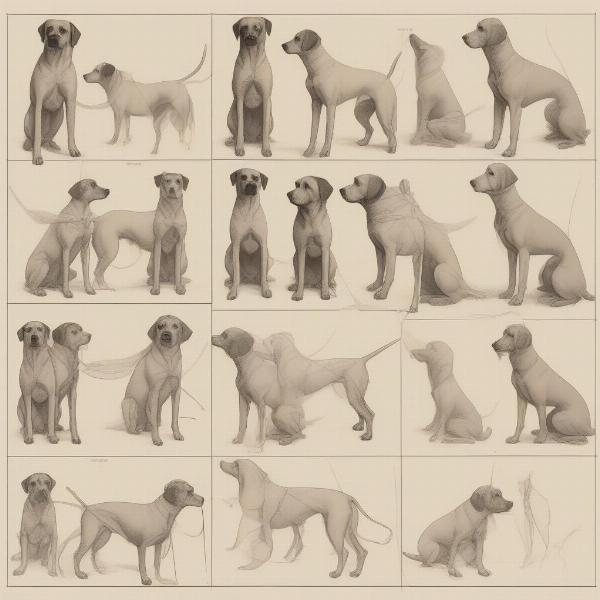The term “dog rod” often sparks curiosity and confusion among dog owners. What exactly is it, and what role does it play in canine anatomy and behavior? This article will delve into the facts and fiction surrounding the “dog rod,” providing clarity and dispelling common misconceptions. We’ll explore the anatomical realities, address the myths, and discuss related aspects of canine reproductive health and behavior.
Many people mistakenly believe “dog rod” refers to a separate organ or a behavioral phenomenon. In reality, the term usually refers to the baculum, also known as the os penis, which is a bone found in the penis of many mammals, including dogs. It provides structural support during mating. This bone is not unique to dogs and is present in various other species. Its size and shape can vary between breeds.
The Baculum: Structure and Function
The baculum is a small bone located within the penile tissue. Its primary function is to facilitate intromission and maintain rigidity during copulation. This helps ensure successful breeding.
 Dog Mating Process
Dog Mating Process
Why Do Dogs Have a Baculum?
The evolutionary reasons for the baculum’s presence are debated among scientists, with several theories proposed. One theory suggests it aids in prolonged copulation, which can be advantageous in certain mating strategies. Another proposes it helps stimulate ovulation in females.
Debunking the Myths Surrounding the “Dog Rod”
Several myths and misconceptions exist about the “dog rod.” Some believe it signifies aggression or dominance, which is incorrect. The baculum’s sole purpose is related to reproduction. Other myths link it to certain behaviors or health issues, which are also unfounded. It’s crucial to rely on scientific understanding rather than perpetuate misinformation.
Common Misconceptions and Their Clarifications
- Myth: A larger “dog rod” indicates a more dominant or aggressive dog.
- Fact: There is no scientific evidence supporting this claim. Size variations are natural between breeds and have no bearing on temperament.
- Myth: The “dog rod” causes pain during mating.
- Fact: While the mating process, particularly the “tie,” might seem uncomfortable to observers, it’s a natural part of canine reproduction and isn’t typically painful.
The Role of the Baculum in Canine Reproduction
The baculum plays a crucial role in the “tie,” a unique aspect of canine mating where the male and female remain locked together for a period after ejaculation. This is facilitated by the swelling of the bulbus glandis, a structure at the base of the penis, around the baculum. The tie ensures sperm are effectively deposited, increasing the chances of fertilization.
The Importance of Understanding Canine Reproduction
Understanding canine reproductive anatomy and physiology is essential for responsible dog ownership. This knowledge helps make informed decisions about breeding, spaying/neutering, and addressing potential health concerns.
Conclusion
The term “dog rod,” often misunderstood, refers to the baculum, a bone found in the penis of dogs and other mammals. It plays a vital role in canine reproduction, specifically in facilitating the “tie” during mating. Discerning fact from fiction is crucial for responsible dog ownership. By understanding the true nature and function of the baculum, we can move beyond the myths and appreciate the complexities of canine anatomy.
FAQs
- What is the “dog rod” made of? Bone tissue.
- Does removing the “dog rod” affect a dog’s behavior? No, it only impacts their ability to reproduce.
- Is the “dog rod” visible externally? Not typically, it’s located within the penis.
- Do all mammals have a baculum? No, it’s present in many but not all mammal species.
- Can a broken “dog rod” be treated? Yes, veterinary intervention is necessary.
- Does the size of the “dog rod” matter for breeding? Not significantly.
- What are some signs of reproductive issues in dogs? Consult a vet for any unusual discharge, discomfort, or behavioral changes.
ILM Dog is your trusted resource for comprehensive information on dog care, breeds, health, training, nutrition, and more. We are dedicated to providing dog owners worldwide with expert advice and practical tips for raising happy and healthy canine companions. From breed selection to senior dog care, we cover every aspect of dog ownership. Contact us today to learn more! Email: [email protected], Phone: +44 20-3965-8624. ILM Dog offers expert advice and comprehensive resources on everything related to dog care, from choosing the right breed to managing their health and well-being.